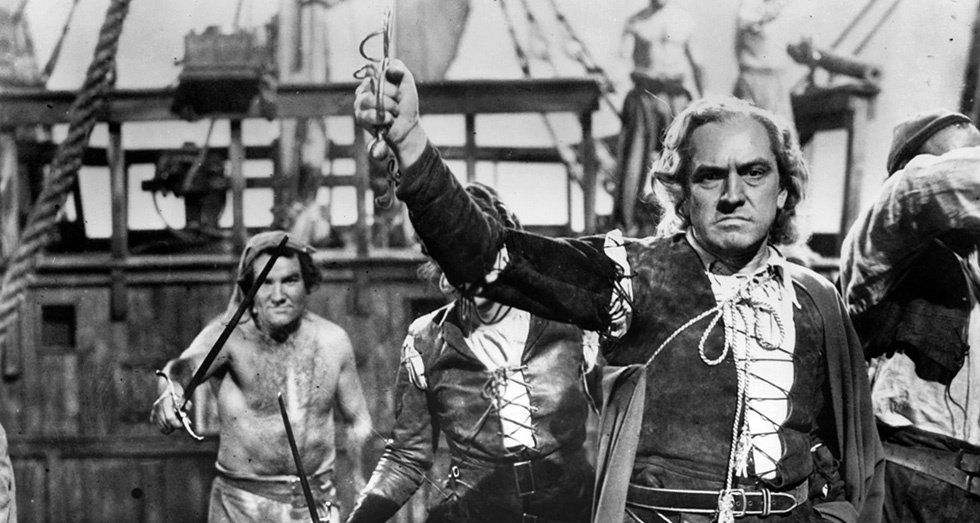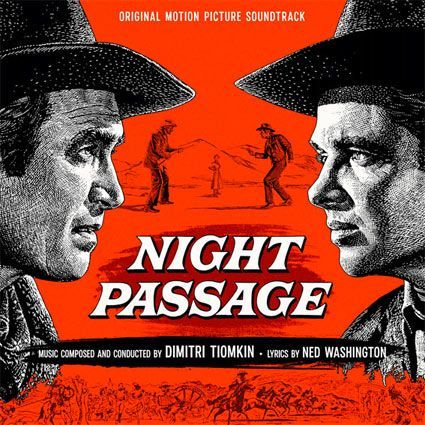Christopher Columbus

The whole of the first half of the picture, CHRISTOPHER COLUMBUS is laid in Spain, mostly at the Spanish Court and shows Columbus’ frustration at the delay and lack of interest in his first adventure. It is difficult with American and English actors to suggest the atmosphere of Spain, - that is what the music has to do - so I have tried using Spanish idioms and tunes akin to those of Spain which convey the feeling and atmosphere of the age in which Columbus set forth from Spain.
The first two climaxes in the film for music are naturally the first sight of the new world and later the return of Columbus with the triumphant news in Spain. In the voyage across I tried to convey the long suspense as confidence gives way to dejection leading to mutiny aboard. After many trials, land is finally sighted and apprehension gives way to thanks-giving as the new world is reached. The voyage back rises rapidly to a crescendo of excitement as Columbus’ship, the “Nina”, approaches Spain. A small boy sights it from the cliff tops and rushes into the town spreading the news “Columbus is back”. The music re-echoed his cries. The townspeople gather at the harbour; the excitement grows intense. The "Nina” sails into the harbour - and now the scene changes to the Court of Ferdinand and Isabella. The Court trumpeters blow a fanfare and, to a triumphant march, Columbus makes his entry into the grand hall and up to the thrones of the King and Queen of Spain. Musically I found the picture extremely interesting.*
Authenticity in music is not exactly the motion picture producer’s forte. Hollywood has ignored the problem entirely, while the achievements of European producers, still under the influence of a strong cultural tradition have been rather sporadic. It is therefore with great pleasure that one hears in this film two snatches, however brief, of authentically presented fifteenth century music. There is part of a motet, perhaps by des Pres, which emanates from the monastery at which Columbus stops, and later, the Gregorian Chant “Salve Regina” is sung aboard ship by a group of hardened sailors, unprettified by harmony, trained voices, or even slick ensemble, it is heard probably much as it was throughout Europe in the Middle Ages and Renaissance, when it was part of the living musical and religious tradition of the most uneducated peasant. As such, its effect is unbelievably striking - one is made doubly aware of the sheer power, elegance, and expressiveness of this remarkable melody.
For the remainder, Mr. Bliss's score is a routine affair, distinguished enough in its execution, but paralleling the episodic nature of the film, and making no attempt to achieve a truly organic integration. The picture changes - the music changes, but only because of the picture. It exists only to fill in the silences or to aid what the picture is already trying to do but unsuccessfully. There is one notable exception, however. When Columbus's party lands on the American shore, the music is of course in a triumphant and jubilant vein. Then, as the camera pans from the beach to the edge of the forest and moves in to glide past the Indians, motionless, watchful, and wondering, the music follows the camera, and without interrupting continuity, changes its mood to the contrasting one of suspense and uncertainty. It has gone parallel to the picture, of course, but at the same time unfolds organically. The resultant feeling of inevitability, so characteristic of organic development and so necessary to dramatic power, makes this one of the few moving moments in the production.
*Editor’ note: This account of the music for the film, written by Bliss himself, will also be found in Bliss on Music: Selected Writings of Arthur Bliss 1920-1975, Edited by Gregory Roscow (OUP 1991).
Film Music Notes: November - December 1949
Publication: Film Music Vol.IX / No.2 pp. 14
Publisher: New York: National Film Music Council
Copyright © 1949, by the National Film Music Council. All rights reserved.



